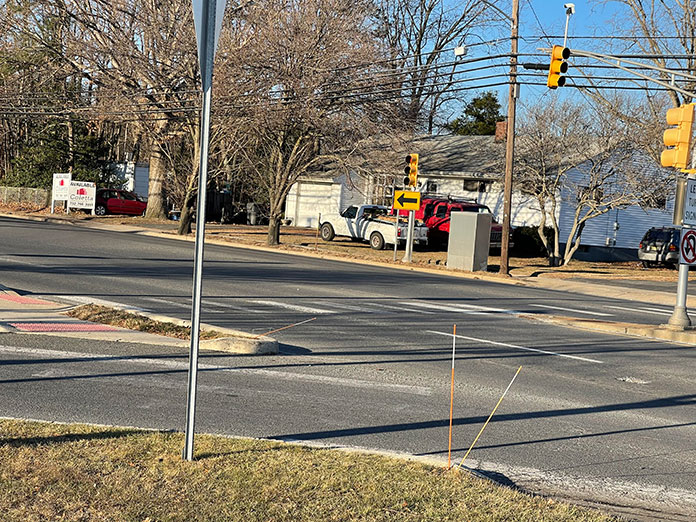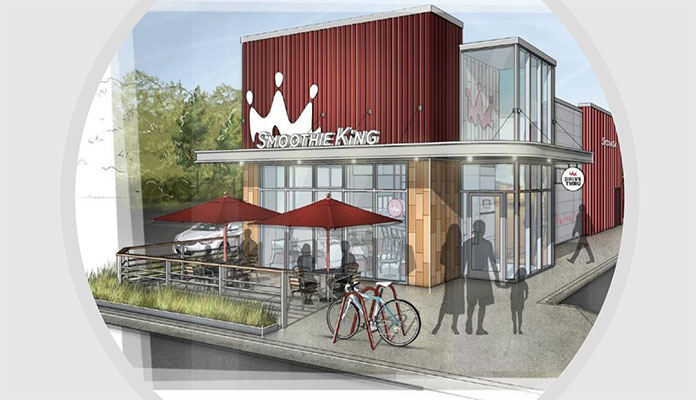
BRICK – After approximately two and a half hours of testimony, cross-examination and sometimes contentious debate, the Township Planning Board approved a plan to build a Smoothie King on two adjoining lots along a busy stretch of Chambers Bridge Road. The plan was met with only two dissenting votes from Board members Matthew Fagan and JoAnne Lambusta.
Located just past the traffic light that serves as the entrance for the Brick Commons Shopping Mall, concerns about the project proposed for the site ranged from increased traffic, visual aesthetics, reduced air quality and the potential for crime and vandalism for the surrounding neighborhood. In addition to the small number of township residents who came out to voice their concerns, the major case for opposition for the land development was put forth by attorney Charles P. Tivenan, who represented John and Peter Kos, owners of a mixed-use building that is immediately adjacent to the east of the property.
John Jackson of the law firm King, Kitrick, Jackson, McWeeney and Wells, attorney for the applicant Humza Tanvir, showed plans for the site, and called upon a number of experts to make the case for the development of the lot at 129 Chambers Bridge Road which would serve as the future home of a new Smoothie King location.
Traffic engineer Justin Taylor testified before the board that based upon his study, there would be “no detrimental impact to the surrounding roadway.” This opinion was scrutinized by Tivenan, given that the comparable stand-alone locations used in the engineering study were not located in New Jersey. Traffic was further brought into question by Board members themselves, who feared a potential “gridlock situation” and pointed out that the comparable sites studied in Harrisburg, Feasterville, and Whitehall, Pennsylvania “do not have shore traffic.”
Josh Sewald, the planner for the applicant, testified before the Board that even though the location is “uniquely shaped for an under-sized lot,” it fit well within the master plan for the Brick town center which calls for “linear commercial development along our arterial roadways and highways.” Sewald listed a number of concessions and improvements to the plan to minimize its impact, including increased “green space,” a smaller building, and reduced signage on the site.
“The big concern,” argued Tivenan, “is the traffic.”

Tivenan, working without a traffic engineering expert of his own, argued that the proposed use for the site “may not be the right fit for the area.” He was quickly interrupted by Jackson, who looked to Board Chairman Bernard Cooke and asked, “Is this cross examination of witnesses, or is Mr. Tivenan doing his closing argument?”
After questioning Taylor on the projected traffic pattern for patrons of the Smoothie King to reach the entrance to the site, Tivenan dismissed the traffic engineer’s explanation by replying, “That seems like a crazy, crazy scenario to get to the access point.”
Taylor’s answers to Tivenan’s questions relied upon his data, which he felt confirmed the plan was workable and feasible. At the conclusion of his queries, Tivenan offered “I very much hope that you are correct, but my suspicion is that you are not.”
Tivenan’s questioning of the applicant’s experts drew admonishment from the Board on several occasions, as he brought up the potential issues of emergency vehicles, insufficient parking, and the chance that drive-through patrons ignore signs and go the wrong way upon entering the lot. Taylor retorted that engineering designs expect that people will follow rules and laws and that, “we don’t design to stupidity.”
After Tivenan was again interrupted by the Board during his questioning of the applicant’s engineer Doug Hanley, Jackson intervened on behalf of his client, characterizing Tivenan’s line of questioning as a stall tactic.
“I think it’s really designed to try to get us to the next meeting,” argued Jackson. “We’re going over things that are redundant. We’re having a lot of speeches that are in the form of questions. It’s taking up too much time. This is not a murder trial.”
In his summary, Tivenan characterized the testimony of the applicant’s experts as “flowery recommendations” as he enumerated the points of concerns of his client, as well as those brought up by residents.
“We believe for various reasons, that this is not the right fit for that site,” he said. “This property is going to affect it for the worse.”
When asked directly by one neighborhood resident why this particular site in Brick Township was chosen, Tanvir replied simply, “I picked it. I think it’s a good location.”







